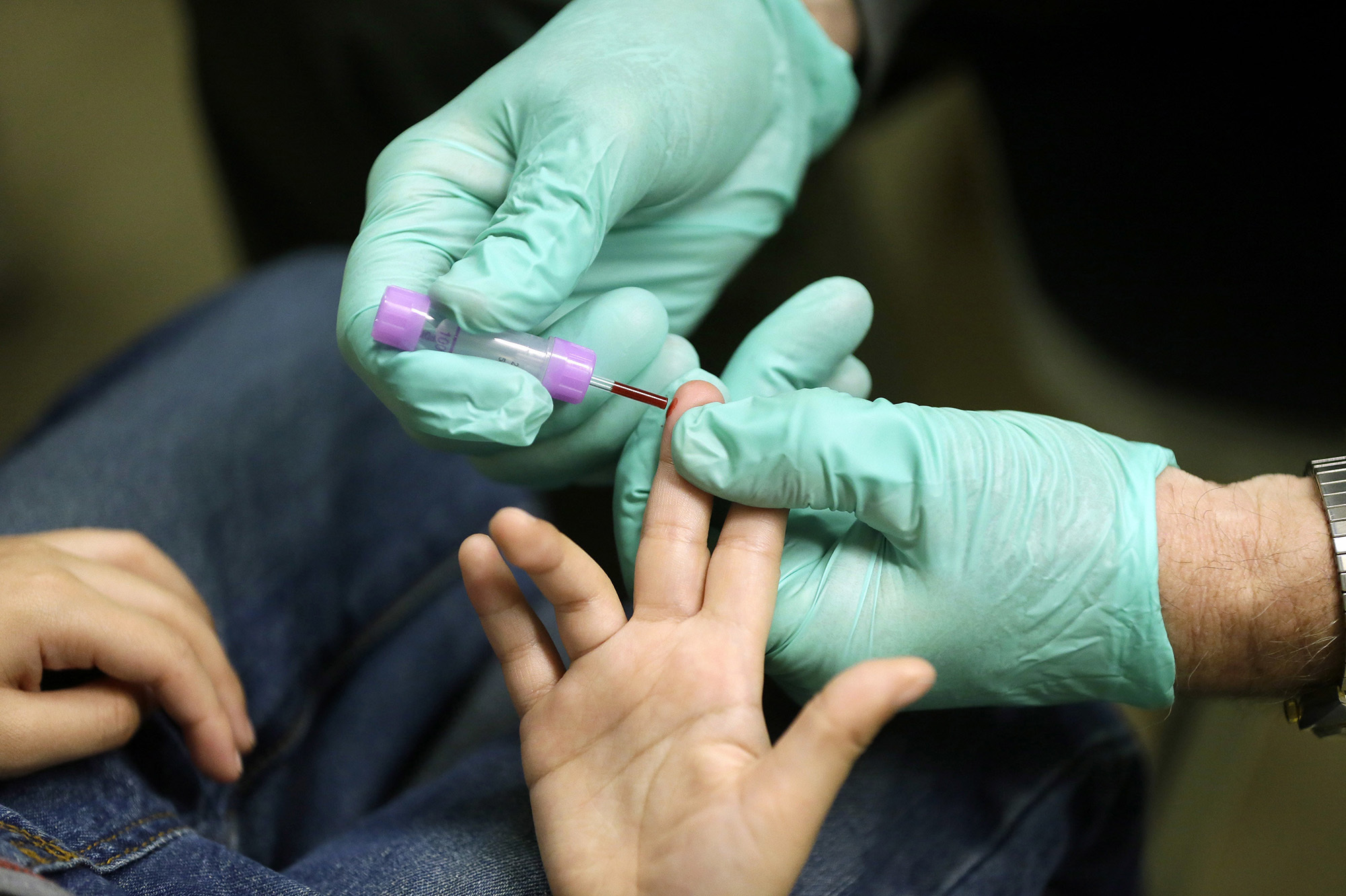Introduction
Through the acquisition of knowledge due to research about lead’s effects on the body and how best to test for lead, Dr. Carol Angle and Dr. Matilda McIntire, as well as other scientists, caused the recognized safe amount of lead to be lowered over time to reflect better scientific understanding and stronger safety standards. Dr. Angle and Dr. McIntire conducted research and practiced in Omaha, but this lower threshold changed the way scientists and medical professionals everywhere sought to test lead levels and how all communities dealt with lead poisioning.

Above: A child in Flint, Michigan gets a blood lead test in January of 2016. "Lead Testing Michigan" by Carlos Osorio is licensed for editorial use through the associated press.
Previously exhibits have discussed Dr. Matilda McIntire and Dr. Carol Angle briefly in the context of public health. However, this exhibit will expand on that work. Dr. Matilda McIntire and Dr. Carol Angle's research is groundbreaking in its own scientific discoveries about blood lead levels, but more broadly their research connects well to the background context of lead testing and research at the time. What they and other researchers discovered in the second half of the 20th century about lead's unexpectedly strong toxic effects both inspired later researchers and a new movement for prevention of lead poisoning. First the exhibit will explore the research of McIntire and Angle, then some newer research on lead poisoning, and lastly it will explore the advocacy and prevention programs that sprung from the lowering of the 'safe' blood lead level.